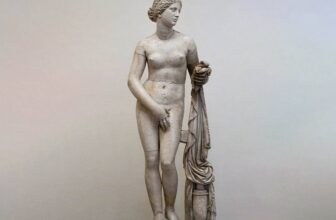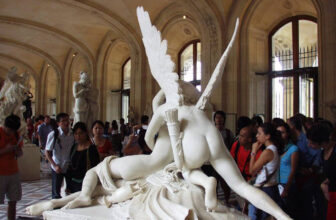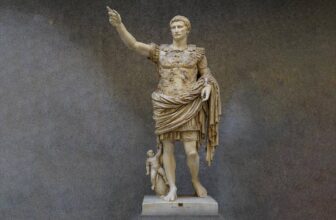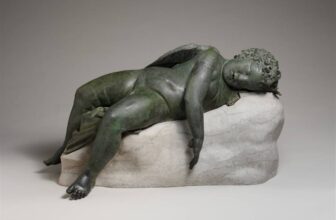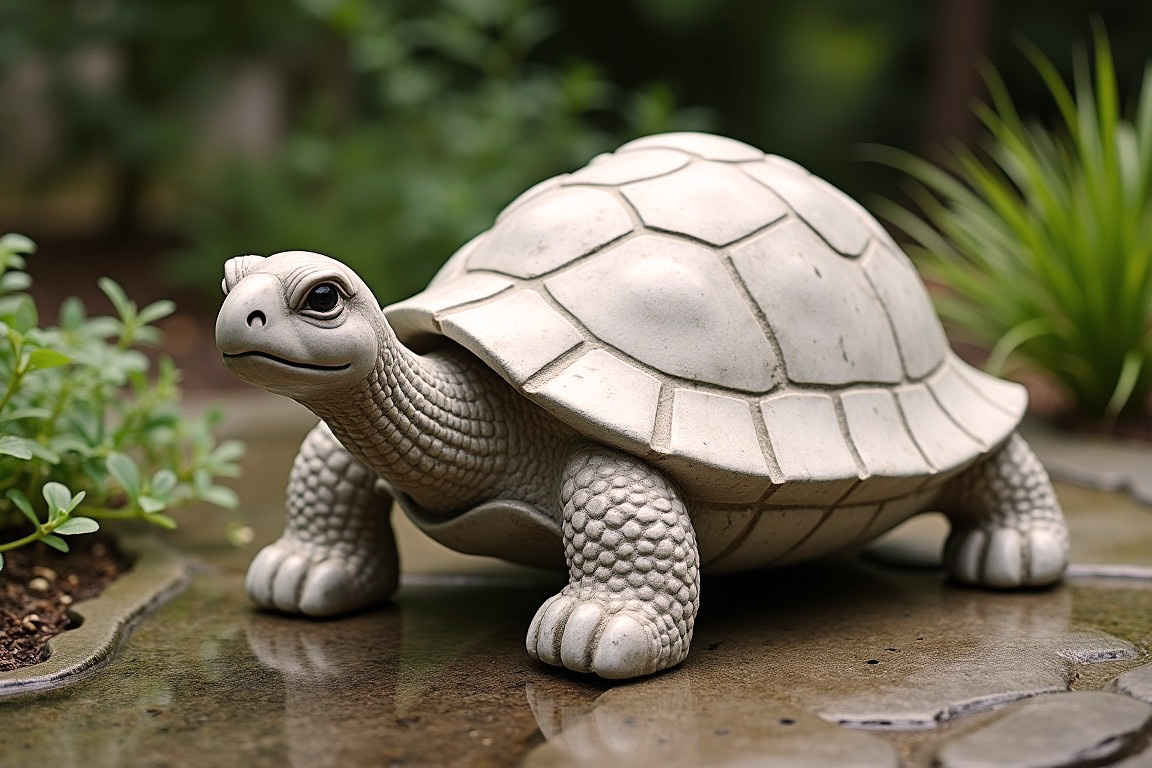
Meaning of Turtle Sculptures and Why They Belong in Every Home and Garden
Tucked away in a quiet corner of a quaint coastal town, nestled between a lush garden of ferns and a koi pond, sat a weathered stone turtle sculpture. It wasn’t large or flashy, but it exuded an inexplicable calm. Passersby often paused by it, children touched its shell curiously, and older visitors sometimes sat nearby in thoughtful silence. What was it about this humble figure that evoked such a sense of peace?
Over time, many would come to see that this turtle sculpture was more than a decorative garden ornament, it was a silent symbol of strength, wisdom, and endurance. Its presence was a story of cultures, spirituality, and human connection with the ancient rhythms of nature. But what does a turtle sculpture truly represent, and why do people across the world place it with such care in their homes and gardens?
Let’s delve into the deeper world of turtle sculptures and discover their timeless allure.
The Turtle in Myth and Culture: A Universal Symbol
Turtles have occupied a revered space in mythology and folklore across the globe for thousands of years. From Native American legends to Hindu cosmology, the turtle is not just an animal, it is an archetype of longevity, grounding, and creation.
1. Eastern Traditions: The Turtle as a Cosmic Pillar
In many Eastern traditions, especially in Hindu and Chinese beliefs, the turtle is seen as a cosmic being. According to Hindu mythology, the god Vishnu took the form of a turtle, Kurma, to help churn the cosmic ocean and retrieve sacred treasures. This divine form symbolized support and stability for the universe.
In Chinese culture, the turtle is one of the Four Celestial Animals, alongside the dragon, phoenix, and tiger. It represents the north, winter, and endurance. The turtle is also said to carry the world on its back, symbolizing its strength and the idea of carrying life forward.
2. Native American Lore: Earth, Wisdom, and Creation
Among Native American tribes, especially the Iroquois, the turtle holds a central place in creation stories. It is said that the world was created on the back of a giant turtle. This is why North America is sometimes poetically referred to as “Turtle Island.” Here, the turtle stands for the Earth itself, a symbol of stability and persistence.
3. African and Polynesian Culture: Patience and Protection
In various African tribes, turtles represent patience, perseverance, and wisdom. In Polynesian cultures, turtle tattoos and carvings are often seen as symbols of protection, travel, and family. These motifs reflect the close relationship between human beings and the sea, and the turtle’s role as a navigator and guardian spirit.
Symbolism of the Turtle Sculpture
A turtle sculpture is a physical representation of these deep-rooted cultural symbols. But its symbolism goes even further into personal and spiritual realms.
1. Longevity and Endurance
The most widely accepted symbolism of the turtle is that of long life. With their hard shells, slow movement, and ability to survive in both water and on land, turtles embody endurance and patience. A turtle sculpture in your home reminds you that great things take time and that slow, steady progress often leads to the most lasting success.
2. Grounding and Stability
Turtles are grounded creatures, close to the earth, moving slowly and deliberately. As a sculpture, the turtle radiates a calming, stabilizing energy. It helps anchor chaotic environments and provides a symbolic “weight” that can help you feel centered.
3. Protection
The turtle’s shell is its home and shield. A turtle sculpture is often placed with the belief that it offers protection to a household. It becomes a spiritual guardian, especially when placed near entrances or key rooms in the home.
4. Wisdom and Inner Knowledge
Turtles have existed for millions of years, surviving through natural disasters and evolutionary changes. They are seen as carriers of ancient wisdom. A turtle sculpture can serve as a gentle prompt to listen to your intuition and trust in inner knowledge that can only be accessed through patience and silence.
Spiritual Meaning of Turtle Sculptures
Beyond symbolism, turtle sculptures have spiritual connotations that can resonate deeply in daily life and in spiritual practices.
1. Connection to the Earth Element
Turtle sculptures are often associated with the Earth element in spiritual philosophies, particularly in Feng Shui and various shamanic traditions. They serve as grounding tools, bringing stability and anchoring spiritual energy into the physical realm.
2. Feng Shui and Energy Flow
In Feng Shui, the turtle (or tortoise) is a symbol of protection, wealth, and long life. It’s believed that placing a turtle sculpture in specific locations can influence the flow of chi, or energy, within a space. It protects against negative energies and brings prosperity.
There are three popular placements:
North – for career stability and advancement.
Back of the house or office – for protection and support.
Southeast – to invite wealth and abundance.
3. Spiritual Journey and Transformation
The turtle’s slow pace is symbolic of the spiritual journey. It suggests that spiritual growth is not a race but a path walked with mindfulness, presence, and self-compassion. For those who are seekers or undergoing personal transformation, a turtle sculpture serves as a beautiful reminder that evolution takes time.
Why Do People Keep Turtle Statues at Home?
People keep turtle statues in their homes for a variety of reasons, both aesthetic and spiritual. Here are some common motivations:
1. Enhancing Decor with Meaning
Turtle sculptures are often beautifully crafted, from minimalist metal designs to detailed resin or stone carvings. They add a natural, calming element to home decor and often serve as conversation starters.
2. Creating a Calming Space
In today’s fast-paced world, people crave peace and serenity in their personal spaces. A turtle sculpture, with its inherent tranquility, can bring that desired calm into any room. It’s not just décor, it’s a presence.
3. Symbol of Luck and Protection
Many people believe turtle sculptures bring good fortune. Whether based on Feng Shui or personal superstition, turtle statues are often kept near entryways or in living rooms to attract luck and repel negative influences.
4. Memory and Legacy
Sometimes turtle sculptures are kept to honor ancestors or loved ones who valued these symbols. They can become heirlooms, passed from one generation to another, carrying stories, meanings, and energy with them.
Is a Turtle Sculpture Good for the Garden?
Absolutely. A turtle sculpture is not only appropriate for a garden, it can be a perfect fit.
1. Blending with Nature
Turtles naturally live in environments with water, plants, and rocks. A garden is the ideal environment to place a turtle sculpture, where it can “live” among flowers, ponds, and stones. It adds a whimsical yet grounding touch to outdoor spaces.
2. Invoking Peace and Protection
A turtle sculpture in the garden acts as a quiet guardian, watching over your green sanctuary. Its peaceful energy enhances the meditative quality of the space, encouraging mindfulness in outdoor moments.
3. Low Maintenance Spiritual Accent
Unlike living animals or water features, a turtle sculpture offers symbolic meaning without requiring care. It’s a lasting element that stands up to the weather and seasons, just like its real-life inspiration.
Where to Put a Turtle Sculpture at Home?
The placement of a turtle sculpture is essential if you want to maximize its symbolism or spiritual benefits. Here are some ideal locations:
1. Entrance Area
Placing a turtle sculpture near the main entrance of your home is believed to bring protection and keep away negative energy. It symbolically guards the threshold of your private space.
2. Living Room
The living room is the heart of the home. A turtle sculpture here can enhance peacefulness and balance in shared family energy.
3. North of the Home or Office (Feng Shui)
In Feng Shui, placing a turtle sculpture in the north sector of your home or office supports career success, wisdom, and stability. It can be placed on a bookshelf, desk, or console table.
4. Bedroom (with Care)
If used in a bedroom, a turtle sculpture should be small and placed respectfully, ideally on a side table or shelf, not on the floor. It can be a symbol of calmness and grounding during sleep.
5. Garden or Balcony
Outdoor spaces benefit greatly from turtle sculptures. Place them near water elements like a pond or birdbath, or at the base of a tree to create a tranquil and balanced area.
Choosing the Right Turtle Sculpture
When selecting a turtle sculpture, consider:
Material – Stone, bronze, wood, ceramic, and resin all have different energies and aesthetics.
Size – Larger statues make statements in gardens, while smaller ones suit indoor altars or shelves.
Design – Some are realistic, others are stylized or abstract. Choose what resonates with your space and intent.
You may also want to align the sculpture’s direction, facing inward symbolizes bringing good energy in, while facing outward may symbolize protection from external forces.
The Mystery Wisdom of Turtle Sculptures
In a world that’s often in a hurry, the turtle reminds us to slow down. Its sculpture, whether nestled in a garden or perched on a bookshelf, carries a whisper of ancient wisdom. It tells us to move steadily, protect what matters, and carry our homes within us wherever we go.
As that stone turtle in the coastal town garden taught its observers, sometimes the quietest symbols speak the loudest truths. And in the unassuming form of a turtle sculpture lies a universe of meaning, waiting patiently to be discovered.
“In stillness, I move. In slowness, I arrive. In silence, I speak.” , The Turtle
